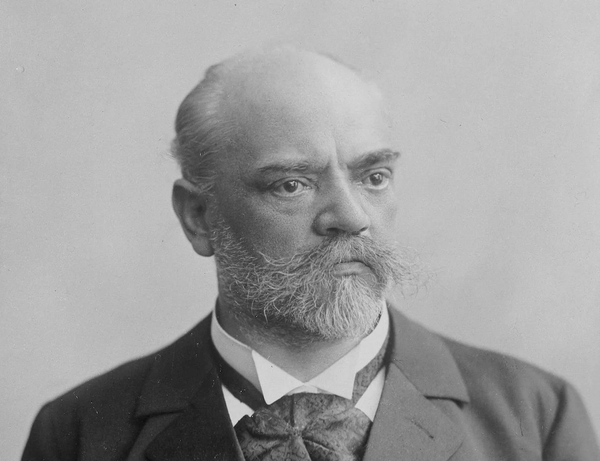7 Breathing Techniques for Singers Inspired by Opera Stars
Opera singers have long been admired for their mastery of breath. From appoggio to expressive inhalation, discover seven timeless techniques inspired by great stars that can help every singer achieve control, stamina, and artistry.

For singers, the voice is both instrument and vessel. Every note, phrase, and flourish depends on breath—the unseen current that sustains tone, phrasing, and projection. Opera singers, whose art demands stamina across large halls without amplification, have long been revered as masters of breathing. Their practices, drawn from centuries of vocal tradition and shaped by individual artistry, offer valuable lessons for singers of all levels.
Here are seven breathing techniques inspired by opera stars that can help vocalists unlock greater control, resonance, and expressive freedom.
1. Appoggio: The Art of Breath Support
One of the most frequently cited principles in operatic training is appoggio, an Italian word meaning “to lean” or “to support.” Legendary singers from Luciano Pavarotti to Renata Tebaldi credited appoggio as the cornerstone of their technique.
At its essence, appoggio involves balancing inhalation and exhalation so the breath is steadily released, rather than forced. Instead of pushing air out aggressively, singers “lean” the sound against a cushion of controlled airflow supported by engaged abdominal and intercostal muscles.
How to practice:
- Take a deep, low breath that expands the ribcage and abdomen.
- Begin singing a sustained vowel, imagining that you are gently leaning the sound on your breath.
- Keep the chest comfortably high, allowing the ribs to remain expanded as long as possible.
Opera stars often say that with appoggio, you should never feel you are “running out” of air, but rather that your body is a reservoir from which breath flows with measured steadiness.
2. Low (Diaphragmatic) Breathing
Maria Callas, famed for her dramatic intensity, was equally devoted to technical foundations. She often spoke about the importance of breathing “from the bottom of the lungs.” This refers to diaphragmatic breathing—drawing air deep into the body rather than allowing shallow chest breaths.
When the diaphragm contracts, the abdomen expands, creating space for a fuller intake of air. Shallow breathing, by contrast, restricts singers to the upper chest and reduces stamina.
How to practice:
- Lie on the floor with a book resting on your stomach.
- As you inhale, let the book rise naturally.
- Exhale slowly, letting the book sink.
- Once this feels natural, replicate the same expansion while standing and singing.
Opera singers use this method to ensure that the breath originates from a grounded, expansive source, providing the foundation for both quiet legato lines and powerful climaxes.
3. Silent Inhalation
If you have ever watched Plácido Domingo step onto a stage, you’ll notice how calmly he prepares before singing—breathing silently and efficiently, without audible gasps or dramatic chest movements.
Silent inhalation ensures the body fills with air without tension. Audible, noisy breaths often signal constriction in the throat, which can carry into the sung tone.
How to practice:
- Inhale as though you are surprised: the throat opens naturally, without strain.
- Allow air to flow in quickly but silently, keeping shoulders relaxed.
- Imagine the air “dropping” into the body rather than being sucked in.
Singers often find that adopting a silent, relaxed inhalation immediately frees their tone, allowing for a natural onset and a steadier vocal line.
4. Breath Management for Long Phrases
Opera arias are notorious for their long, arching phrases. Think of Verdi’s “Celeste Aida” or Puccini’s “Nessun dorma”—lines that seem to go on endlessly. Singers like Leontyne Price or Jonas Kaufmann demonstrate remarkable control in sustaining such phrases without breaking the musical line.
The secret lies not only in taking a deep breath but in metering the exhalation. Rather than expelling air quickly, singers ration it, using just enough to sustain tone without depletion.
How to practice:
- Inhale deeply and hiss out the air like a slow, steady stream. Time how long you can sustain it without breaking.
- Gradually increase your endurance, aiming for evenness of flow.
- Apply this exercise to long sung phrases, imagining the breath as a golden thread unspooling at a consistent pace.
This approach allows opera singers to make phrases sound inevitable and seamless, as if they had limitless reserves of air.
5. Catch Breaths and Recovery Breathing
Even the greatest opera stars need to “steal” breaths. The art lies in doing so quickly and unobtrusively. Singers like Cecilia Bartoli are masters of slipping in tiny catch breaths without disturbing the musical line.
Recovery breathing is equally important—learning how to release tension after a demanding passage so the next phrase begins with ease.
How to practice:
- Practice inserting tiny, quick inhalations during exercises, keeping the shoulders and chest stable.
- Aim to refill the lungs enough for the next phrase without over-inhaling.
- After difficult passages, exhale gently before taking a new breath, clearing residual tension.
Catch breaths remind us that breath management is as much about strategy as technique—choosing where to breathe so that expression and line remain uninterrupted.
6. The Singer’s Yawn: Open Throat Breathing
Montserrat Caballé, known for her effortless pianissimo high notes, often advised singers to approach breathing and onset as though beginning a yawn. The yawn naturally widens the pharynx and lowers the larynx, creating an open, resonant space.
How to practice:
- Simulate the beginning of a yawn, noticing how the soft palate lifts and the throat feels wide.
- Inhale within that shape, then sustain a note, keeping the sensation of openness.
- Avoid exaggeration; the goal is a comfortable, relaxed spaciousness.
Opera singers use this technique to maintain both ease and resonance, especially in passages that require floating high notes or long-held pianissimi.
7. Breath as Emotion
Perhaps the most profound lesson from opera stars is that breath is not merely mechanical but expressive. Luciano Pavarotti often said, “The breath is the voice of the soul.” How a singer breathes shapes the emotional contour of a performance—whether urgent, tender, or ecstatic.
Think of Maria Callas: every breath seemed charged with drama, drawing audiences into the psychological world of her characters. Jonas Kaufmann’s subtle preparatory breaths convey intimacy, while Anna Netrebko’s expansive inhalations promise grandeur.
How to practice:
- Sing a simple phrase, first with neutral breathing, then imagining the breath as carrying a specific emotion—love, grief, joy.
- Notice how the tone, phrasing, and intensity change.
- Experiment with using breath as the emotional “ignition” for every note.
This approach reminds singers that breathing is not only technical but deeply artistic—an expressive gesture in itself.
Integrating These Techniques
Each of these breathing practices—support, diaphragmatic expansion, silent inhalation, long-phrase management, catch breaths, open-throat breathing, and emotional breath—offers a different facet of vocal mastery. For opera singers, they are woven together seamlessly, becoming instinctive on stage.
For students and enthusiasts, the challenge is to practice them systematically, slowly internalizing the habits until they no longer feel like “techniques” but natural foundations of singing.
A useful routine might include:
- Beginning with lying-down diaphragmatic breathing exercises.
- Practicing silent inhalations and sustained hissing for control.
- Applying appoggio to short vocalises.
- Incorporating catch breaths in arpeggios or scales.
- Ending with a song or aria excerpt, focusing on breath as emotion.
Lessons from the Opera Stage
What distinguishes opera singers is not only their technical expertise but their ability to make breath invisible. In the theatre, audiences rarely notice the mechanics; they are swept up in soaring legato, explosive climaxes, or delicate whispers. Behind this magic lies years of disciplined breath training.
For today’s singers—whether aspiring professionals, choir members, or passionate amateurs—the techniques of opera stars remain invaluable. They remind us that the voice is inseparable from the breath, and that mastery lies not in force but in balance, freedom, and artistry.





